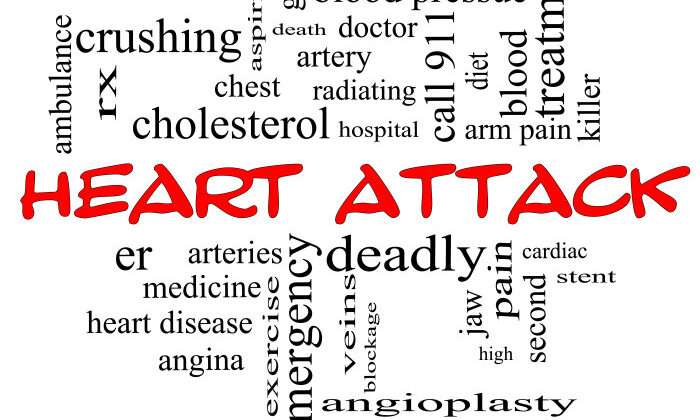The words used to describe many medical conditions can be difficult to understand. When the doctor tells you that a loved one has unstable angina, you need to know what they are talking about. This is especially true for heart disease, which was the leading killer of Black Americans1 in 2015, according to the Centers for Disease Control (CDC).
This post will explain some of the causes of heart disease, how to reduce your risk of heart disease and the words commonly associated with heart disease.
If you’re like most people, you think that heart disease2 is a problem for others. But heart disease is the number one killer in the U.S. It is also a major cause of disability. There are many different forms of heart disease. The most common cause of heart disease is narrowing or blockage of the coronary arteries, the blood vessels that supply blood to the heart itself. This is called coronary artery disease and happens slowly over time. It’s the major reason people have heart attacks3 .
Other kinds of heart problems may happen to the valves in the heart, or the heart may not pump well and cause heart failure. Some people are born with heart disease.
You can help reduce your risk of heart disease by taking steps to control factors that put you at greater risk:
- Control your blood pressure
- Lower your cholesterol4
- Don’t smoke
- Get enough exercise
Coronary artery disease5 is the most common type of heart disease, but there are many other conditions that affect the heart.
Terminology of Heart Disease
Acute coronary syndrome is a term that includes heart attack and unstable angina.
Angina, a symptom of coronary artery disease, is chest pain or discomfort that occurs when the heart muscle is not getting enough blood. Angina may feel like pressure or a squeezing pain in the chest. The pain also may occur in the shoulders, arms, neck, jaw, or back. It may feel like indigestion.
There are two forms of angina—stable or unstable:
- Stable angina happens during physical activity or under mental or emotional stress.
- Unstable angina is chest pain that occurs even while at rest, without apparent reason. This type of angina is a medical emergency.

Aortic aneurysm and dissection are conditions that can affect the aorta, the major artery that carries blood from the heart to the body. An aneurysm is an enlargement of the aorta that can rupture or burst. A dissection is a tear in the aorta. Both of these conditions are medical emergencies. Learn more from the aortic aneurysm fact sheet.
Arrhythmias are irregular or unusually fast or slow heartbeats. Arrhythmias can be serious. One example is called ventricular fibrillation. This type of arrhythmia causes an abnormal heart rhythm that leads to death unless treated right away with an electrical shock to the heart (called defibrillation). Other arrhythmias are less severe but can develop into more serious conditions, such as atrial fibrillation, which can cause a stroke.
Atherosclerosis occurs when plaque builds up in the arteries that supply blood to the heart (called coronary arteries). Plaque is made up of cholesterol deposits. Plaque buildup causes arteries to narrow over time.
Atrial fibrillation is a type of arrhythmia that can cause rapid, irregular beating of the heart’s upper chambers. Blood may pool and clot inside the heart, increasing the risk for heart attack and stroke. For more information, see our atrial fibrillation fact sheet.
Cardiomyopathy occurs when the heart muscle becomes enlarged or stiff. This can lead to inadequate heart pumping (or weak heart pump) or other problems. Cardiomyopathy has many causes, including family history of the disease, prior heart attacks, uncontrolled high blood pressure, and viral or bacterial infections.
Congenital heart defects are problems with the heart that are present at birth. They are the most common type of major birth defect. Examples include abnormal heart valves or holes in the heart’s walls that divide the heart’s chambers. Congenital heart defects range from minor to severe.

Heart failure is often called congestive heart failure because of fluid buildup in the lungs, liver, gastrointestinal tract, and the arms and legs. Heart failure is a serious condition that occurs when the heart can’t pump enough blood to meet the body’s needs. It does not mean that the heart has stopped, but that muscle is too weak to pump enough blood. The majority of heart failure cases are chronic, or long-term heart failures.
The only cure for heart failure is a heart transplant. However, heart failure can be managed with medications or medical procedures.
Peripheral arterial disease (PAD) occurs when the arteries that supply blood to the arms and legs (the periphery) become narrow or stiff. PAD usually results from atherosclerosis, the buildup of plaque and narrowing of the arteries. With this condition, blood flow and oxygen to the arm and leg muscles are low or even fully blocked. Signs and symptoms include leg pain, numbness, and swelling in the ankles and feet.
Rheumatic heart disease is damage to the heart valves caused by a bacterial (streptococcal) infection called rheumatic fever.
Jay Harold recommends MedlinePlus6 to find additional information about most medical terminology. It’s a free and trusted medical website.
MedlinePlus is the National Institutes of Health’s Web site for patients and their families and friends. Produced by the National Library of Medicine, the world’s largest medical library, it brings you information about diseases, conditions, and wellness issues in language you can understand. MedlinePlus offers reliable, up-to-date health information, anytime, anywhere, for free.
Enjoyed this post? Share it and read more here. Jay Harold has put together a Resource page that you may find useful when trying to improve your health and wealth.
Please take this advice of Muhammad Ali and give back to others. “Service to others is the rent you pay for your room here on earth.” ~ Muhammad Ali.
Bibliography
- https://www.cdc.gov/nchs/fastats/black-health.htm
- https://medlineplus.gov/heartdiseases.html
- https://medlineplus.gov/heartattack.html
- https://medlineplus.gov/cholesterol.html
- https://www.cdc.gov/heartdisease/other_conditions.htmhttps://medlineplus.gov/
- https://medlineplus.gov/




